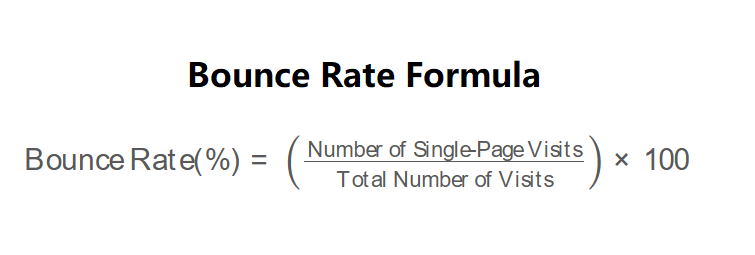 Home
Home
 Back
Back

Definition: This calculator computes the bounce rate, which is the percentage of users who visit a website and leave after viewing only one page (a single-page session). It is a key metric for assessing user engagement with a website.
Purpose: It is used by website owners and digital marketers to evaluate how well a website retains visitors. A high bounce rate may indicate low engagement, while a lower rate suggests users are exploring more pages.
The calculator uses the bounce rate formula, as shown in the image above:
\( \text{Bounce Rate} (\%) = \left( \frac{\text{Number of Single-Page Visits}}{\text{Total Number of Visits}} \right) \times 100 \)
Steps:
Calculating the bounce rate is essential for:
Example 1: Calculate the bounce rate for a website with 1,000 total visits and 500 single-page visits:
Example 2: Calculate the bounce rate for a website with 2,500 total visits and 750 single-page visits:
Q: What is a good bounce rate?
A: A good bounce rate varies by website type. For example, blogs may have higher rates (50-90%) if users find what they need on one page, while e-commerce sites typically aim for lower rates (20-40%) to encourage browsing.
Q: How can a website reduce its bounce rate?
A: Improve user experience by ensuring fast page load times, relevant content, clear navigation, and engaging calls to action. Also, ensure marketing campaigns target the right audience to reduce irrelevant traffic.
Q: Does a high bounce rate always indicate a problem?
A: Not necessarily. For single-page sites or informational pages (e.g., a recipe or FAQ page), a high bounce rate may indicate users found what they needed quickly and left satisfied.